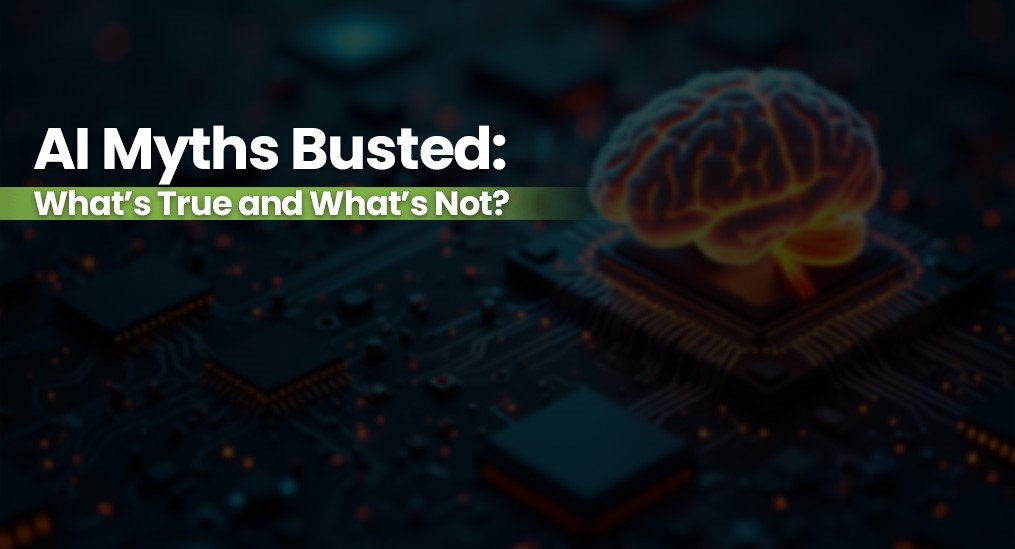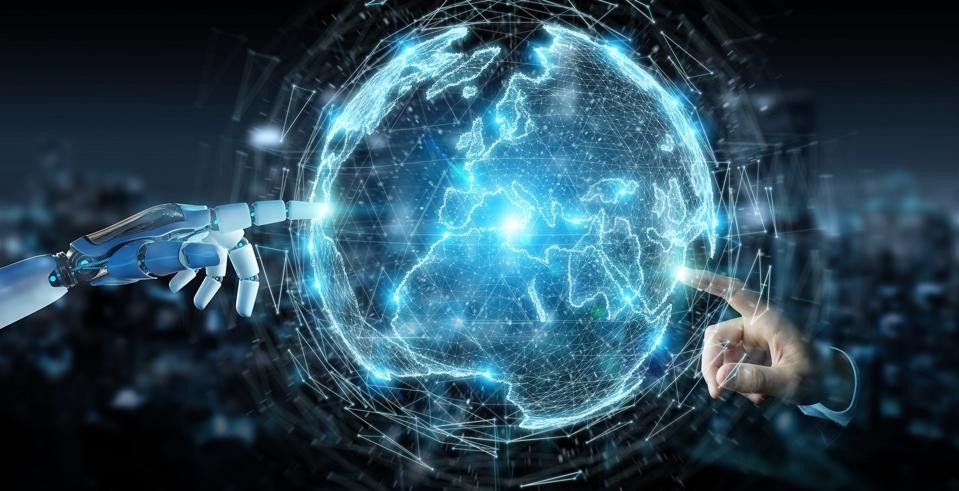Humaira
September 14, 2025

Artificial Intelligence (AI) has quickly become one of the most talked-about technologies in the world of digital transformation. From boardrooms to classrooms, everyone seems to have an opinion about what AI can—or cannot—do. Unfortunately, along with the excitement comes plenty of myths and misconceptions. Some of these myths are amusing, while others create unnecessary fear or unrealistic expectations. In this post, we’ll break down a few of the most common AI myths, add a touch of humor, and bring clarity to how AI truly impacts our world.
Ah, the classic! Whenever AI comes up in conversation, someone inevitably says, “Robots are going to replace us all!” While it’s true that AI automates repetitive tasks, the bigger picture is about collaboration, not replacement.
AI handles the boring stuff—like data entry, scheduling, or scanning through thousands of resumes—so that humans can focus on tasks requiring creativity, empathy, and complex decision-making. For example, chatbots may answer basic customer queries, but it’s the human support agent who brings compassion to difficult cases.
In fact, digital transformation powered by AI is already creating new roles: AI trainers, prompt engineers, and ethical AI specialists. Instead of eliminating opportunities, AI shifts the focus toward higher-value skills. If anything, the “robots taking over” fear sounds more like a science fiction movie than a business reality.
Let’s be honest—AI is only as fair as the data it’s trained on. Imagine teaching a child using only outdated or biased textbooks; you can guess the kind of answers you’d get. AI works in much the same way.
For example, an AI recruitment system trained on biased hiring data may favor certain groups over others. That’s not the AI being malicious—it’s simply reflecting the patterns it learned. The responsibility lies with humans to design fair training sets, regularly audit algorithms, and apply ethical standards.
Bias in AI isn’t a reason to fear the technology; it’s a call to use it more responsibly. With the right checks and balances, AI can actually help reduce human bias by highlighting patterns we might overlook.

Here’s a fun one: many people think AI “understands” like we do. Spoiler alert—it doesn’t. AI doesn’t “think,” “feel,” or “comprehend.” What it does is identify patterns in massive amounts of data and generate responses based on those patterns.
When you ask an AI tool a question, it doesn’t sit back and ponder the meaning of life. Instead, it scans its training data to predict the most likely answer. It may sound like it understands you (sometimes a little too well), but it’s essentially advanced pattern recognition, not human-level cognition.
Think of it this way: AI can beat the best chess players in the world, but it doesn’t know what a “game” is. Context, emotion, and moral judgment remain very much human domains.
Another popular belief is that AI is the ultimate magic wand for all business problems. Need more sales? “Let’s add AI.” Want happier customers? “Let’s install an AI chatbot.” While AI is powerful, it isn’t a one-size-fits-all solution.
Digital transformation is about strategy, culture, and process—not just technology. AI can amplify your capabilities, but it still requires clear goals, human oversight, and integration with existing systems. Without a solid foundation, implementing AI can create more confusion than clarity.
AI myths often arise because the technology is both fascinating and complex. It’s easy to let science fiction blur into business reality. But when we strip away the exaggerations, what remains is a practical truth: AI is here to enhance human potential, not replace it.
So the next time someone says, “AI will take all our jobs” or “AI understands like us,” you’ll know better. Smile, correct the myth, and remember—digital transformation is not about choosing between humans and AI. It’s about bringing out the best of both.

Pinova Technologies, based in Stockholm, Sweden, transforms businesses with innovative digital solutions, delivering exceptional websites, marketing, and IT services for over a decade.
Feel free to contact & reach us !!
Copyright © 2025 pinova.tech. All rights reserved.